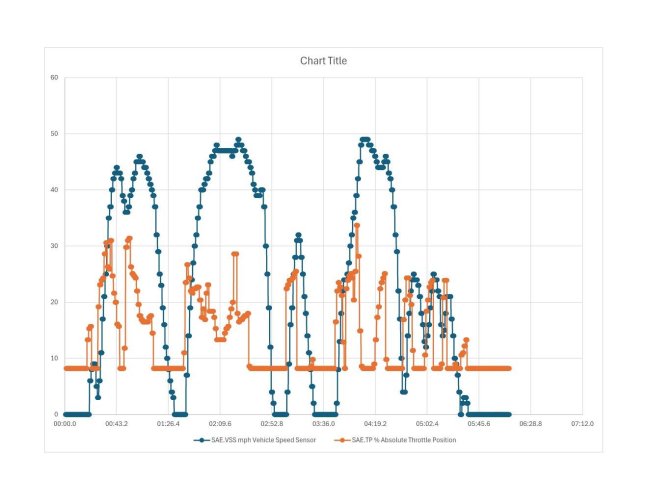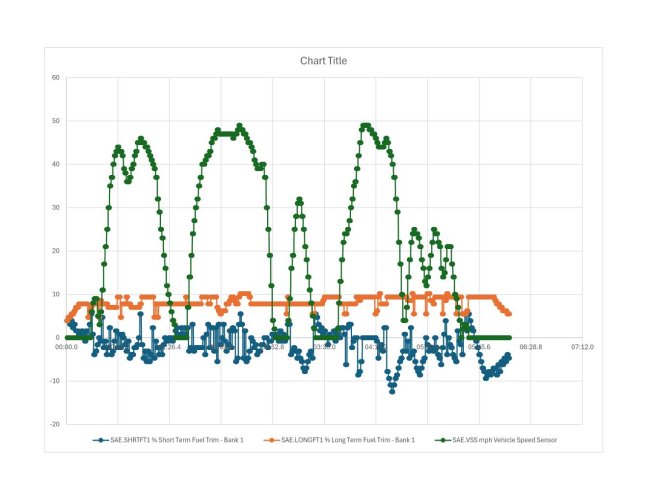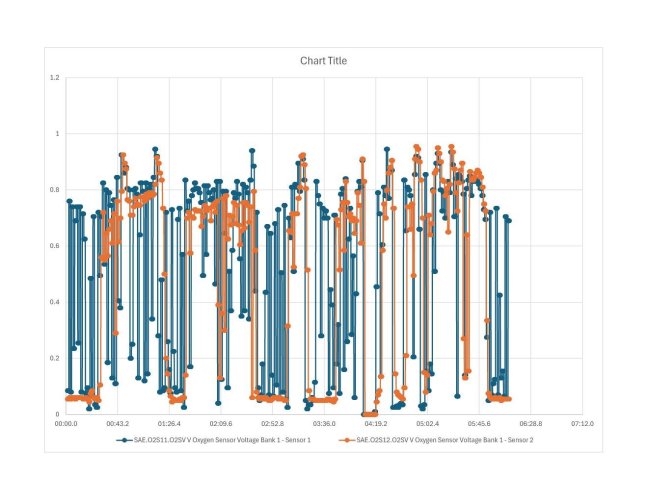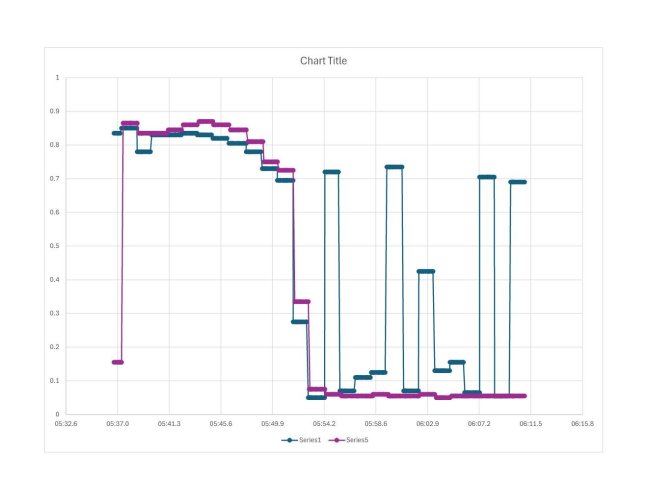For @jps8460 with love
Let me know what you think. Lol.
30 seconds of O2 voltages at idle.
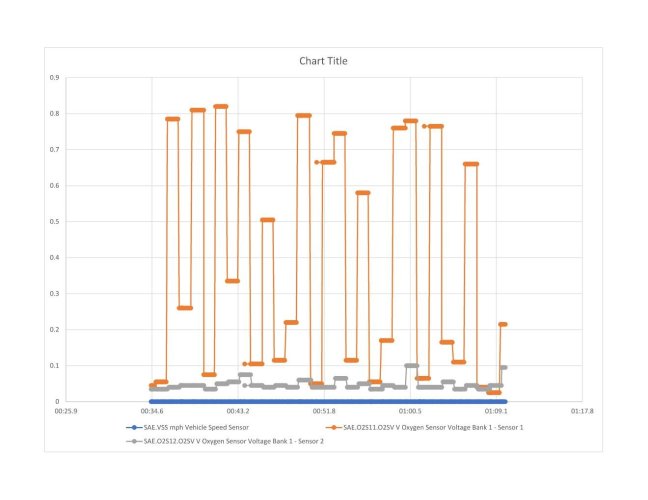
Fuel trims for a few minutes coming home from the store. The flat spot in the middle is where my logger lost connection for a minute.
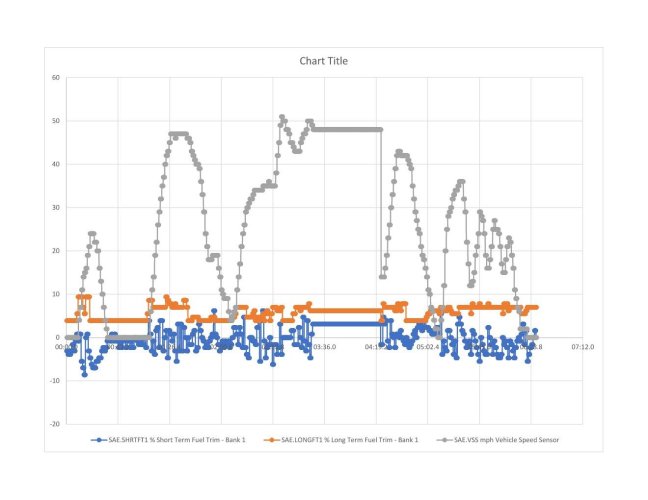
The full O2 sensor run on the way home. The shot above was that period of idling from :34 to 1:09.
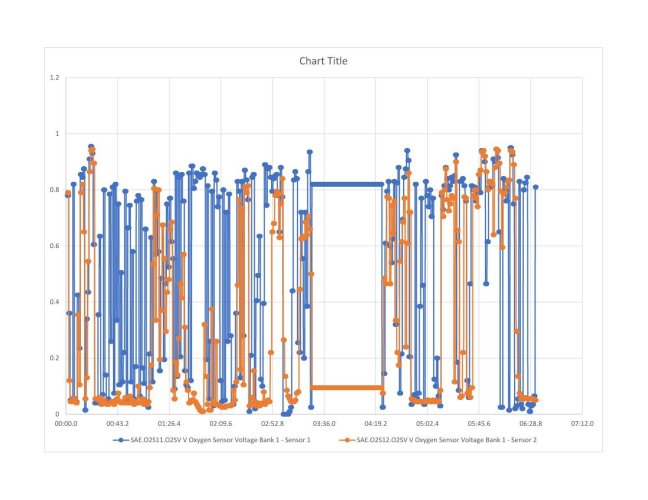
TPS we already know is above spec at idle.
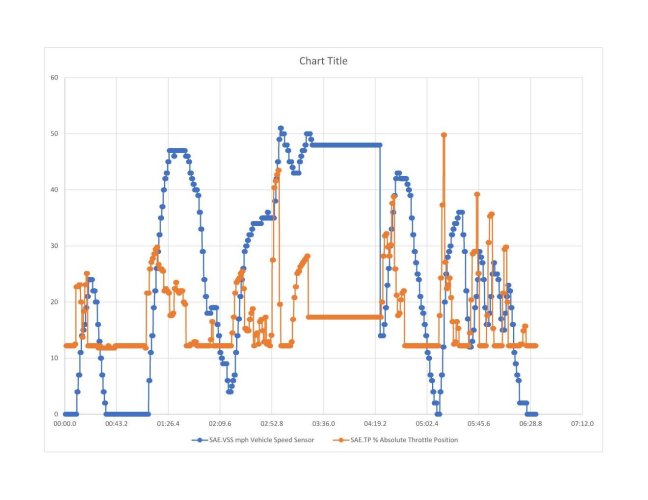
Let me know what you think. Lol.
30 seconds of O2 voltages at idle.

Fuel trims for a few minutes coming home from the store. The flat spot in the middle is where my logger lost connection for a minute.

The full O2 sensor run on the way home. The shot above was that period of idling from :34 to 1:09.

TPS we already know is above spec at idle.


